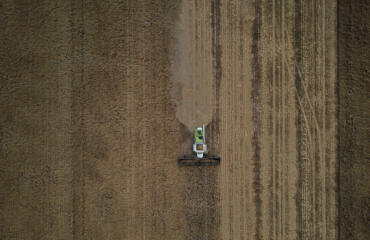“In one word, the impact has been devastating,” says Claude Ullin, the proprietor of Aboriginal art gallery ‘High on Art’ in Melbourne’s Armadale. “It’s the very thing the government didn’t want to happen.”
Under the stricter rules, artworks bought by Australia’s 420,000 self-managed superannuation funds (SMSFs) cannot be displayed by trustees or anyone related to them in their home or office. Instead, they must be properly insured, independently valued and stored off the premises, out of sight.
This applies not only to artworks but also to other “personal use” collectables such as jewellery, antiques, coins and rare books.
“The tightening up of the rules is only fair,” says financial planner Max Newnham, who founded the website SMSF Survival Centre. “Superannuation is for retirement.”
Graeme Collins, of superannuation advisers CBS Financial, agrees: “Yes, the sole purpose of superannuation is to provide for retirement benefits. Getting a personal benefit from an artwork now, before you retire, by enjoying seeing it hanging on your lounge room wall, breaks that sole purpose test.”
“SMSFs were my biggest customers, as they were for all Indigenous artworks . . . My sales have dropped by 80 per cent since July 2011 and I’ve seen a massive number of Indigenous art galleries close in the last two years.” — Claude Ullin, of High On Art
The new rules were triggered by the Cooper Review of 2010 and came into effect on July 1, 2011 under the then-Minister for Financial Services and Superannuation, Bill Shorten.
As a result, self-managed superannuation funds are only allowed to invest in specified assets such as property and shares. Artworks and collectables are classified as assets but if they are displayed they are deemed to be “used” and so no longer qualify.
“SMSFs were my biggest customers, as they were for all Indigenous artworks,” says Mr Ullin. “And now they’ve disappeared. My sales have dropped by 80 per cent since July 2011 and I’ve seen a massive number of Indigenous art galleries close in the last two years. I’m one of the few left in Melbourne.”
There is no comprehensive data on the Indigenous arts industry as a whole. The most recent figures are contained in an Australian Bureau of Statistics report into the sector published in 2006 using data collected from the 2001-02 Census.
It found that 52 per cent of Aboriginal and Torres Strait Islanders were more likely to work in the visual arts sector as their main job, compared to 9.7 per cent of non-Indigenous Australians.
However, on average, they earned less than their non-Indigenous counterparts, despite the growing prominence of Indigenous art.
A 2002 Inquiry into the Contemporary Visual Arts and Craft sector by Rupert Myer found the total Indigenous art and craft market was worth $200 million a year with expectations that it was a fast expanding sector.
“It’s an all-round market crash,” says High on Art’s Mr Ullin. “It isn’t simply that SMSFs aren’t buying Indigenous art any more. The market price of Indigenous art fell so dramatically that people like me who were carrying a lot of stock were affected by that as well.”
The Aboriginal visual arts sector is not only an industry but also an integral part of a traditional culture. Its 43 regional arts centres all highlight the connection between artists, the land and their communities. The most recent figures available are in a Senate Standing Committee report of June 2007 which show the art centres generated $12 million in sales income in 2005-06 and received $1.7 million in project grants and funding. On average, around 60 per cent of the sale value went to the artists and about 40 per cent to the art centre.
Individual Indigenous artists earning their own living can also benefit the wider community: in Indigenous culture, especially in remote communities, pooling resources is common and artists often share their cash earnings and goods purchased.
“Art can be valued in ways other than dollars and cents,” says Mark Stapleton, who heads up the Aboriginal and Torres Straits Islanders’ Arts Division of the Australia Council for the Arts. “It can be of inestimable value for young Indigenous people to learn about seeing something made. When we make art in the company of others, we’re teaching people the 360 degrees of human experience in which to measure art.”
Mr Ullin believes Australia is beginning to recognise the greatness of its Indigenous artists. “Their work is truly an Australian movement and some of their work is so stunning,” he says. “It is this country’s greatest export and this crisis needs looking into.”
The Indigenous art sector has traditionally attracted strong overseas investment. But the effects of the global financial crisis, the recent strength of the Australian dollar and a possibly overheated market have also played a part in the sector’s current predicament.
Despite the market’s slump, the renowned Indigenous affairs expert Professor Jon Altman, who founded the Centre for Aboriginal Economic Policy Research at the Australian National University, says he is unaware of any concerted push to review the super fund rules. “[When the rules came in] the response of a number of key collectors was to quickly offload their art collections onto an already flooded secondary market,” he says. “I believe the deleterious impact will continue.”


